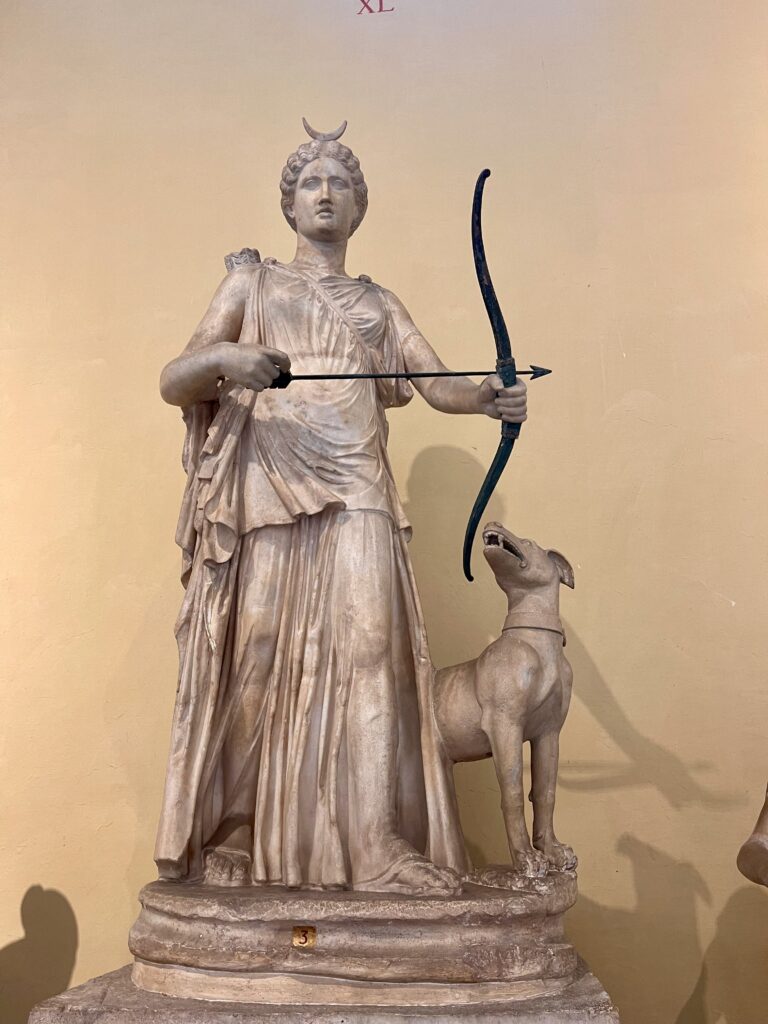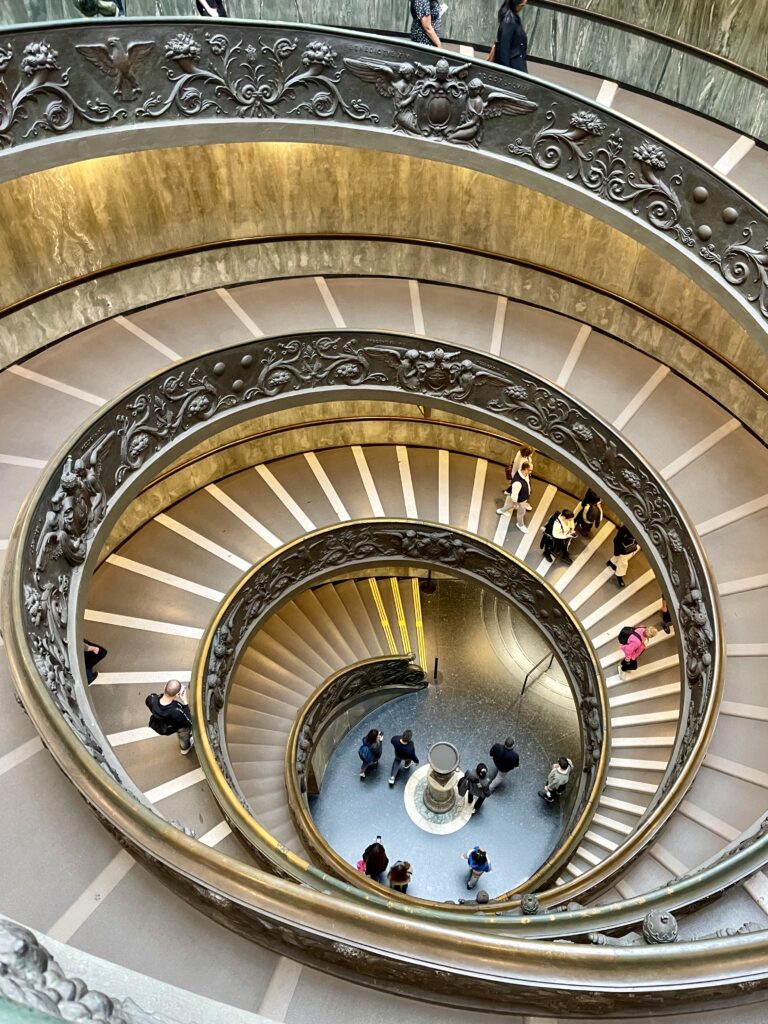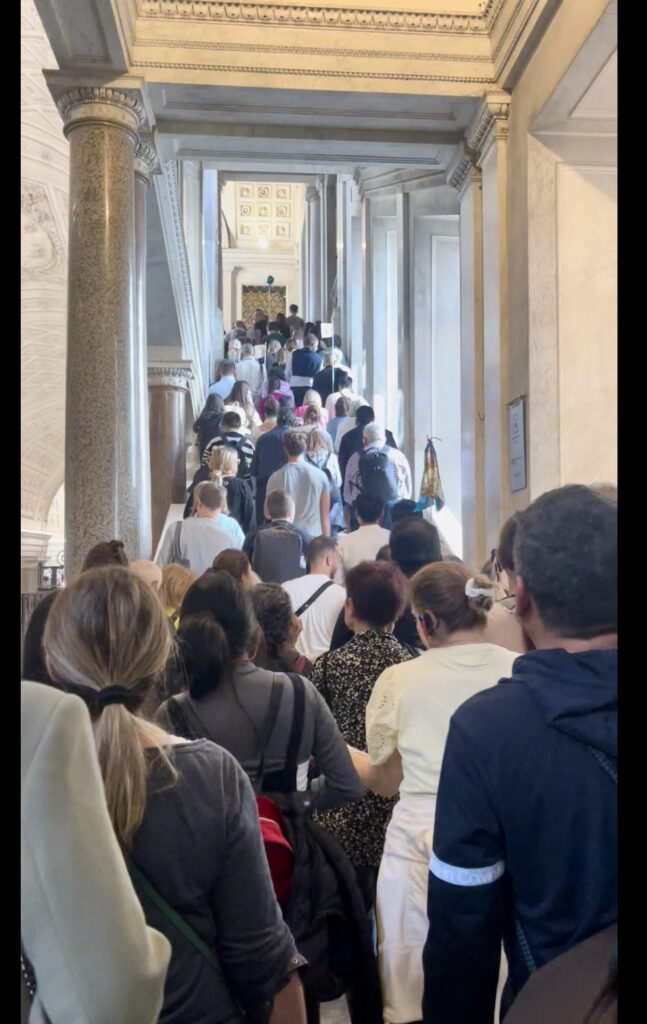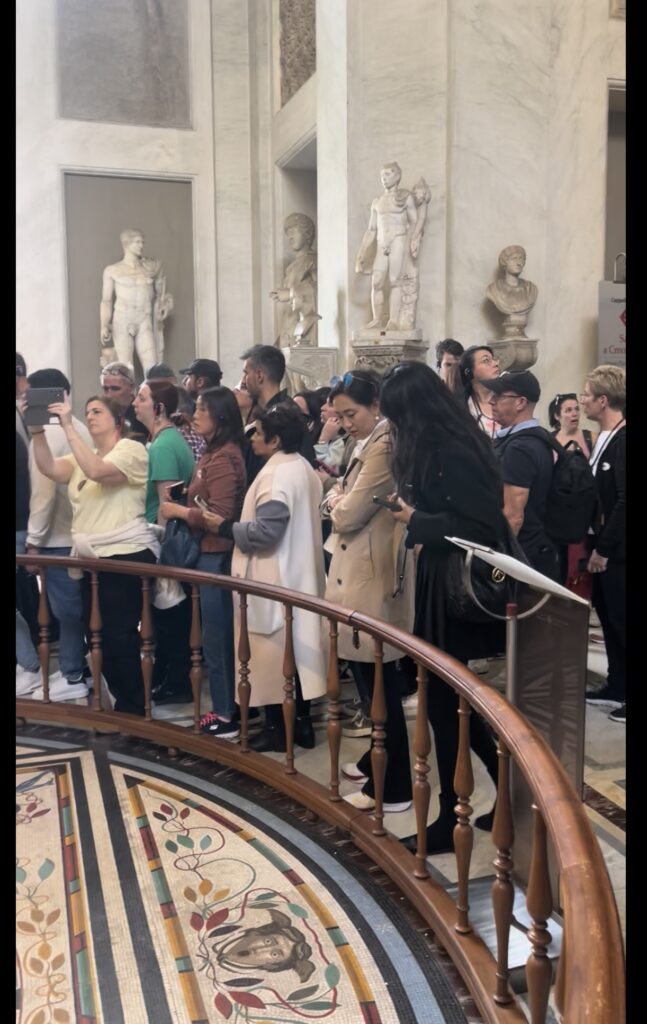“The Vatican Museums, a museum for all. A place for involvement, participation and inclusion. A Museum to enjoy, to see, to touch, to hear and to smell.”
These words open the accessibility page of the Vatican Museums: one of the most renowned art & cultural institutions in the world. They feature iconic rooms such as the Sistine Chapel & Stanzas of Raphael, and masterworks of painters such as Michelangelo and Caravaggio 🖼️. But do they also serve as a treasure trove for the visually disabled? I visited the museums in October 2023 and created a list of pros and cons for you!
➕ Pros ➕
1) The Vatican offers FREE entry to all disabled visitors with ‘certified invalidity of more than 74%’, along with one companion if necessary.
➡️ Additionally, disabled visitors are provided guaranteed priority skip-the-line entry, provided a valid document/card is presented at Special Permits and/or Reception desks. I indeed did not have to wait in line during my visit.
2) There’s an accessibility panel on the website page designated to VI visitors. This is rare for websites and I highly appreciate it.
3) The Museums offer a free (!) service of tactile and multi-sensory tours specifically designed for the visually impaired and blind.
➡️ During this tour, VIPS are “offered the opportunity to explore paintings and a broad selection of sculptures and original works exposed in the Pinacoteca of the Vatican, the Gregoriano Profano Museum, the Gregorian Egyptian Museum and the Ethnological Museum, as well as the Vatican Gardens ”
This tour is offered in multiple languages and organized for a maximum of 7 people (+ 1 companion). Thermoformed panels 🌡️ and prospective bas reliefs and olfactory references are also used to analyze the works. 🧐
Unfortunately, I completely missed the page explaining the tour prior to my visit (or it was recently added), so I can’t say anything regarding quality just yet.
❣️ IMPORTANT! ❣️
Reservations are required and should be made via email:
E-mail to: education.musei@scv.va and be sure to put in the subject: Visite Non Vedenti” (‘visit without sight’)







➖ Cons + Tips ➖
The tour includes entry to the museums. Personally, I like to have the option to either take a tour or explore the museum myself. However, navigating the museum without the tour was… molto difficile. Some tips:
1) Be prepared to directly ask for help and information yourself
➡️ I visited the museum using my symbol cane. I had to go to a reception desk to get my ticket printed (cane in hand), giving the staff enough opportunity to inform me about the tour or the free access for disabled visitors. Instead, I paid full price and got zero extra help. I would have appreciated an offer.
2) Expect large crowds, plan your visit wisely
➡️ It was way too crowded when I visited and it was a Monday morning during the ‘off-season’. Knowing that the tickets online are always sold out, I doubt it’s better, if not worse on other days. The crowds made it hard to get close to paintings or take pictures of information boards. Part of the problem was the extremely high number of guided groups, who would stand still blocking entire passageways. The museum should consider implementing crowd-control measures to alleviate this issue.
3) You are not allowed to use your phone in the Sistine Chapel
➡️ Understandable, but problematic for us VIPS, because I know many of us rely on our phones to zoom in on paintings. Staff should be trained to accommodate the needs of visually impaired visitors in such cases and provide free binoculars.
4) The tour cannot be booked online
➡️ And…. that’s exactly how I missed it. It’s not listed under the options when reserving a general ticket. The Vatican Museums should make it clearer where to email to and consider adding an option to request the tour directly on the website.
5) Ask yourself for a free audio-guide
➡️ I strongly believe audio guides should be free for the visually impaired. The staff member eventually gave me a free audio guide (rather than charging money), but only after I specifically asked for it. Again, here they had plenty of opportunity to inform me about the tour, which I would have loved to take.
6) Guide dogs have to be muzzled
➡️I am not a guide dog user so I am not sure if this is common practice, but given the extensive training of service dogs I feel it’s excessive. In addition, guide dog users are requested to inform the Museums several days in advance, which makes a spontaneous visit quite hard.
I hope this information proves helpful! Should you have any further questions about my experience, please don’t hesitate to contact me.
Love 🥰,
Marie




